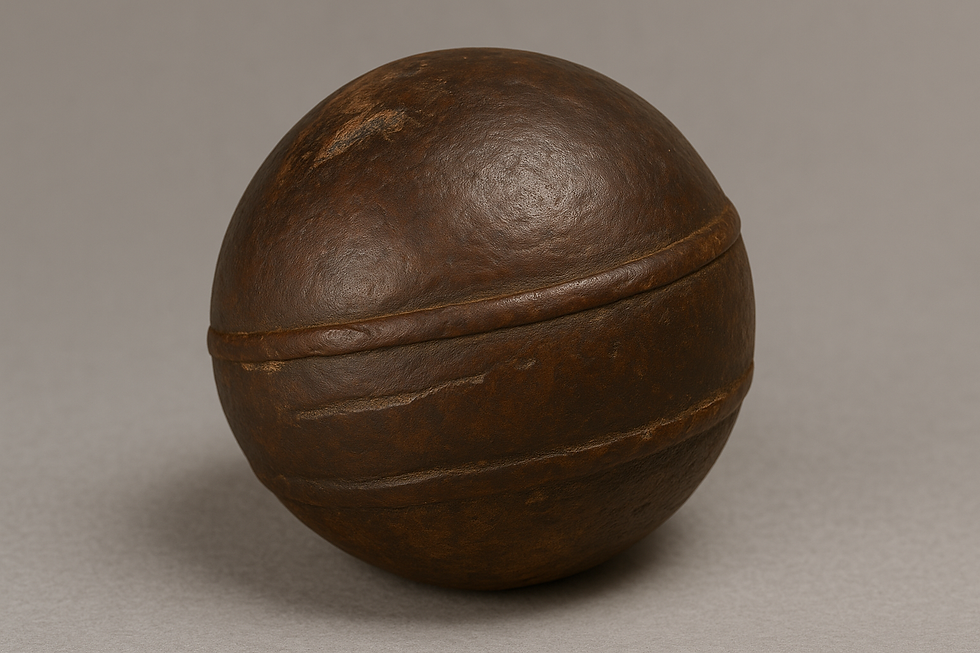The Klerksdorp Spheres: Ancient Artifacts That Challenge Our Historical Understanding
- Kristi Bass

- Jul 26
- 3 min read
Updated: Sep 9

Are we truly the first advanced beings on Earth—or are there traces of forgotten intelligence buried deep in time?
One of the most enigmatic discoveries of the 20th century, the Klerksdorp Spheres—often referred to as “Out-of-Place Artifacts” (OOPArts)—continue to puzzle scientists, historians, and consciousness explorers alike. Found in South Africa near the mining town of Klerksdorp, these small, spherical objects are not just geologically fascinating—they may also hold profound implications for our understanding of human history and the timeline of intelligent life on Earth.
What Are the Klerksdorp Spheres?
The Klerksdorp Spheres are metallic or hematite-rich spheres (some grooved, some smooth) measuring between 0.5 to 10 cm in diameter. They were discovered in pyrophyllite deposits during mining operations near Ottosdal, South Africa.
The Klerksdorp Spheres: Ancient Artifacts That Challenge Our Historical Understanding
These deposits are geologically dated to be approximately 2.8 to 3 billion years old—predating not just modern civilization, but even the emergence of multicellular life as we know it.
The Debate: Natural Formation or Intelligent Design?
Mainstream Geological View
Most geologists classify the spheres as concretions—natural mineral formations that occur through the slow accumulation of materials in sedimentary rock. Their grooves and symmetry, they argue, are the result of natural weathering, pressure, and mineral crystallization over eons.
In this view, while fascinating in shape, the spheres are not evidence of ancient technology or intelligent design.
Alternative Theories
Researchers and thinkers outside the mainstream propose a far more radical interpretation.
They point to:
The near-perfect symmetry of some spheres
The deliberate-looking grooves etched around their equators
The metallic composition in a region otherwise composed of soft rock
Reports (though contested) that some spheres were perfectly balanced or could spin without visible cause in museum display cases
Such observations have led to speculation that the Klerksdorp Spheres might be artifacts of a long-lost advanced civilization, or perhaps even evidence of non-human intelligence interacting with Earth’s early environment.
Why Do They Challenge the Historical Narrative?
The dominant archaeological timeline suggests that human civilization emerged around 300,000 years ago, with agriculture, metallurgy, and architecture developing within the last 12,000 years. The idea that any form of intelligent life or engineering existed billions of years ago runs counter to every accepted model of human (and planetary) evolution.
If even one of the spheres were proven to be artificially manufactured, it would:
Upend evolutionary biology as we understand it
Call into question the linearity of human progress
Imply the existence of advanced civilizations that left no trace—except enigmatic objects like these
This, in essence, is why the Klerksdorp Spheres ignite such passionate debate. They're not just geological anomalies—they symbolize a potential rupture in the story we've been told about our origins.
Echoes Across Cultures and Continents
The idea of ancient, cyclical, or even pre-human civilizations isn't new. From the lost cities of Atlantis and Lemuria to the Vedic Yugas and indigenous creation myths, many ancient traditions describe vast cycles of rise and fall—of civilizations reaching advanced states and disappearing, often due to catastrophe or cosmic realignment.
In this context, the Klerksdorp Spheres serve not just as potential artifacts, but as anchors for ancestral memory—reminders that our current civilization may not be the first to gaze at the stars and ask, “Where did we come from?”
Conclusion: Mystery, Humility, and the Invitation to Re-Explore
The Klerksdorp Spheres invite us to approach history with humility and curiosity. Whether they are natural oddities or the remnants of something more profound, they challenge us to expand our thinking and question linear assumptions about time, intelligence, and evolution.
Perhaps the spheres are not an answer, but a question—one that echoes across billions of years, urging us to remember who we are, and who we might have once been.
Sources:
Cairncross, B. (1988). “Cosmic cannonballs”: A geologic explanation. South African Lapidary Magazine, 30(1), 4–6.
Heinrich, P. V. (1996). The South African Grooved Sphere Controversy. TalkOrigins Archive.
IFLScience. (2023). The Strange Klerksdorp Spheres Found In 3 Billion‑Year‑Old Rock.
Klerksdorp sphere. (2025, March). In Wikipedia. Retrieved from Wikipedia database.
Ancient Origins. (2014). 2.8‑Billion‑Year‑Old Spheres Found in South Africa: How Were They Made?
Cremo, M., & Thompson, R. L. (1993/1999). Forbidden Archeology: The Hidden History of the Human Race. Torchlight Publishing.
ISKCON News. (2014). 2.8‑Billion‑Year‑Old Spheres Found in South Africa – How Were They Made?


